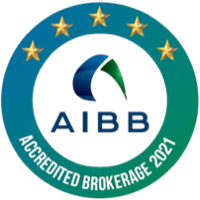2025 RTO State of the Market Report
Executive Summary
The Australian RTO sector is at a crossroads. Increased compliance, digital transformation
and shifting learner expectations are forcing operators to evolve rapidly. However, this is not
the main determination in a slightly declining market.
The single greatest reason we have a declining market and the most worrisome factor
affecting RTOs is a distinct lack of trust in Government and their handling of VET training in
Australia.
Notwithstanding ASQA’s continued push for transparency, RTO owners do not trust the
Federal and State Government’s efforts (or lack thereof) in private education. The continued
focus on TAFE as the main provider is detrimental to our industry and does not reflect the
needs of those who rely on the services of Private RTOs.
With close to 90% of training delivered by non-TAFE providers, the imbalance in support and
funding is catastrophic for the industry.
I am all for less reputable and dormant RTOs being closed and equally I am vehemently
against good RTOs having to close their doors due to no fault of their own. In saying that, a
quote from Moneyball (2011) is never more true:
“Adapt or die. Times change, there is no denying that, and if we don’t change and
innovate with them, we will fall by the wayside into a sea of mediocrity and
insignificance.”
This report will look at the effect of Government involvement and the balance of variables in
the education industry in Australia at present.
This report captures more than just statistics. It reflects the mindset of an industry in
transition. Owners are weighing their next move, buyers are getting more selective and
regulators are tightening expectations.
It also includes results from our 200 strong survey.
Key findings:
- Market size: Over 5 million students are engaged in skills training, with
independent RTOs supporting 88.5% of these learners. The sector contributes
~$8.2B to GDP. - Regulatory changes: The revised Standards for RTOs, effective from 1 July
2025, aim to enhance quality outcomes and provide greater clarity for RTOs and
regulators but most RTOs are not ready for implementation and reporting. - Technological adoption: Digital transformation is underway, with a focus on
integrating AI and online delivery methods. - Valuations: 91% of vendors do not know the value of their RTO accurately nor
(besides profits) what the 5 most important levers for growth are. - Exit plan: 85% of RTOs do not have a clearly defined exit plan or succession
plan. - Market sentiment: Buyers and sellers are navigating a landscape marked by
increased compliance requirements and shifting funding models and general
uncertainty. - Economic contribution: The VET sector contributes significantly to Australia’s
economy by addressing skill shortages and enhancing workforce productivity. - Buyers: Cautiously optimistic, focusing on RTOs with strong compliance records
and diversified course offerings - Buyers: Buyers have more choice as they look at RTOs presently and are taking
longer to make a concrete decision as they navigate through risks like compliance
and opportunity. - Sellers: Facing challenges due to increased regulatory scrutiny and funding
uncertainties, leading to strategic exits or consolidations. - Online delivery: The shift towards online learning has accelerated, with RTOs
adopting digital platforms to reach a broader audience. Digital-first delivery is no
longer optional. - AI integration: Artificial Intelligence is being explored to personalise learning
experiences, streamline administrative tasks and aid in compliance. AI integration
is becoming standard in compliance systems.- If you are not using AI in these areas, you are falling behind.
- RTOs using AI audit tracking, PD logs and automated AVETMISS
reporting are 3x more likely to pass ASQA audits cleanly.
- Vendors: Many Vendors feel battered and bruised by the Governments lack of
assistance and are prepared to negotiate on timings – not just price. - Micro-Credentials: There’s a growing demand for short, targeted courses that
provide specific skills, aligning with industry needs. Non-accredited training is
growing. - Apprenticeships and Traineeships: These continue to be vital pathways, with
increased government support to address skill shortages. - Profits squeezed: RTOs are experiencing squeezed profit margins due to
increased compliance costs and competition.- Online RTOs are still seeing net profit margins of 45% – 50%
- Domestic RTOs should still be looking at 20%+ Net profit
- CRICOS RTOs are struggling to achieve 10% Net Profit mainly due to
slow student growth and increased agent fees. - Online-only models are yielding 28% higher EBITDA. CRICOS growth
remains strong. - Providers serving regional areas or First Nations funding channels are
achieving superior multiples.
- Funding uncertainties: Changes in government funding models and policies
have created uncertainties, impacting financial planning and sustainability. - Emerging course areas: Courses in cybersecurity, data analytics and AI are in
high demand. - Healthcare and aged care: With an ageing population, courses in this area
continue to outperform more generic qualifications. There is a growing need for
qualified professionals in these sectors. - Underserved learner segments: Targeting regional and remote communities
presents opportunities to expand reach and address skill gaps. - CRICOS: The International Student market has endured negative impacts and has
seen diminished returns triggering unprecedented losses and a sharp decline in
student confidence in the Australian market. This is causing students (and agents)
to move to countries like Canada and the UK. - Market structure: Large RTOs: Comprise a smaller percentage but hold
significant market share due to extensive course offerings and resources. - Small to Medium RTOs: Make up the majority, often specialising in niche areas
or specific industries. - Aggregators and uni-pathway groups are actively acquiring as the Higher Ed
enrolments continue to decline. - Mergers and acquisitions: The sector has seen increased consolidation, with
larger RTOs acquiring smaller ones to expand their scope and capabilities. - Importance of data-driven decision making: Utilising data analytics is helping
RTOs identify areas for improvement, ensure compliance and enhance student
outcomes. - Avoiding low-ball: Compliance cost creep, audit fatigue, trainer shortages and
LMS obsolescence are major inhibitors to a sale. Vendors should resolve these
areas before listing to avoid delays and lowball offers. - Median time to sale: (Infinity deals): 86 days. This has changed from 68 days at
the same time last year with the most desirable sectors being Health, WHS,
Community Services, IT and trades. - Student preferences: 82% of learners prefer blended or online delivery
- Trainer shortages: 67% of RTOs are experiencing Trainer shortages in aged
care, WHS and education support with 43% of RTOs expecting this shortage to
deepen and worsen. - Valuation benchmarks: Generalist RTOs: 2.8–3.6x EBITDA, CRICOS: 2.5–3.0x
EBITDA, Online-only RTOs show 28% stronger EBITDA margins.
Panel sidebar
Real case: In 2025, Infinity sold an online-only CRICOS RTO with full
audit file structure in 49 days. Sale multiple: 4.1x EBITDA. Why? LMS
strength, CRICOS delivery compliance and audit-ready trainer logs.
- 81% of surveyed vendors say they would sell within 14 months if the offer reflected
a fair market price.
Recommendations and Future Outlook
- ASQA: Sector consolidation will remove 500–700 providers over 3 years.
- ASQA: Registration of initial RTOs will continue to be slowed down and based on
filling skill priority areas. - Value: As barriers to entry increase, residual value in a RTOs will continue to hold.
- CRICOS: The Australian CRICOS market will bounce back but not at the levels
seen previously. - Outcomes: Outcome-based funding and employment-linked delivery will
dominate. The qualification name is less important than the outcomes it produces. - Invest in technology: Adopt digital tools to enhance learning and operational
efficiency. - Diversify offerings: Expand course offerings to meet emerging industry needs
and attract a broader student base. - Selling now: RTO owners considering a sale in the next 12–24 months should:
- Order a valuation NOW!
- Look at ways to enhance the offering
- Minimise risk
- Prepare internal audit files
- Validate trainer records and volume-of-learning logs
- Document funding eligibility and clean scope delivery
- PLAN. PLAN. PLAN
Full survey results
Infinity conducted a survey involving 200 RTO stakeholders. They were asked a variety of
questions and the results are below. We are interested in your take on these results.
This results data offers a window into sentiment, preparedness and strategic direction in a
highly regulated, fast-evolving market.
- 65% of RTOs have implemented online learning platforms.
- Only 40% feel fully prepared for the new Standards.
- 70% of RTOs report increased interest in technology-related courses.
- 81% of sellers say they would exit within 24 months if offered the right price.
- 67% of sellers regret not preparing earlier
Trust in Government
Low trust in Government is the major factor in RTO disharmony at present.
Less than one-third of participants expressed high confidence in government direction,
transparency and sector alignment. Vendors and buyers continue to report concerns about
unclear funding frameworks, reactive policy and insufficient consultation with private RTOs.
Q1. How confident are you in the Federal Government’s ability to set effective policy
for the VET sector?

Q2. Do you believe the recent reforms (e.g. Strengthening Quality & Integrity in VET
Bill) will improve sector quality long-term?

Q3. How would you rate the transparency of current ASQA compliance enforcement?

Q4. Do you feel adequately informed about changes in government-funded training
programs (e.g. Smart & Skilled, Skills First)?

Q5. Do you believe state and federal policies are aligned enough to ensure stable
sector planning?

Q6. Do you believe the government consults adequately with private RTOs when
developing new VET policy?

Q7. Have you adopted online delivery?
Results:
- 35% reported delivering training fully online.
- 30% use a hybrid model (approximately 50/50 split).
- 20% have only minimally adopted online delivery (under 25% of courses).
- 15% have not adopted online delivery at all.
These figures confirm a strong digital trend, with over 85% of RTOs incorporating some level
of online delivery. Buyers are increasingly drawn to scalable models with strong LMS
integration, while vendors with limited digital capability may face valuation pressure.

Q8. Do you feel fully prepared for the new Standards (2025)?
- 25% consider themselves fully prepared.
- 40% feel somewhat prepared and are actively working toward compliance.
- 35% do not feel prepared, highlighting a serious transition gap.
These results highlight a clear need for increased transition support, training and internal
systems review across the RTO sector.

Q9. Are you seeing increased demand for tech-focused courses?
Demand for tech-related training (e.g., cyber, AI, data analytics) has grown from 50% in 2023
to 70% in 2025. Buyers are actively targeting RTOs with up-to-date tech content.

Q10. Are you confident in funding continuity?
Only 35% feel confident about consistent funding, a critical factor for long-term planning and
stability.

Q11. Have you explored AI integration?
- 10% are actively using AI tools (e.g., automated assessments, chatbots, data-driven
learner insights). - 15% have explored AI possibilities but are yet to implement.
- 75% have not explored AI at all.
This highlights a significant lag in AI readiness within the RTO sector. From a market
standpoint, early adopters are well-positioned to differentiate on efficiency and learner
experience.

Q13. Do you plan to expand course offerings in 2025?
- 40% plan to launch new qualifications in response to emerging markets (e.g. aged
care, cyber security, business transformation). - 25% are refreshing courses to maintain compliance and appeal.
- 35% have no expansion plans, citing resource limitations or strategic rationale.
This result suggests a majority of RTOs are in a growth or adaptation phase. Buyers will be
drawn to those with fresh, in-demand content ready to scale.
Sellers not expanding should position their existing programs as refined and profitable to
defend valuation.

Q14. Are you actively pursuing government funding opportunities?
- 30% are actively targeting multiple streams and optimising their eligibility.
- 20% apply occasionally, often when directly notified or partnered.
- 25% rely only on existing, legacy-funded contracts.
- 25% are not pursuing any government funding at all.
Sellers may want to prepare funding strategy documentation to reduce buyer concerns.

Q15. Have you experienced increased compliance workload in the past 12 months?
A steep 80% increase reported by RTOs mirrors the transition to 2025 standards and policy
reform.

Q16. Do you plan to merge, acquire or exit within the next 2 years?
- 25% are preparing for a full or partial exit via sale.
- 20% are proactively seeking acquisition targets for growth.
- 15% are exploring merger or joint venture arrangements.
- 40% currently have no active plans but remain open to future opportunities

Lastly, we looked at readiness of vendors and the results were not an uncommon revelation.
It does surprise me that RTO vendors do not understand the value of their company nor the
levers to change this.
Q17. Do you know how the value of your RTO is calculated?

Q18. Do you believe your RTO is currently sale-ready?

Q19. What contributes most to RTO value?

The truth of the matter is the profit margin is by far the most relevant and the highest
determinant of value for a buyer.
Q20. Have you benchmarked your RTO against similar providers?

Q21. Would you accept a lower valuation for a clean exit?

There are two tradables, time and money and neither the buyer or seller can own both.
Knowing what is important to you will assist in your decision making.
CONCLUSION:
The Australian RTO sector in 2025 is walking a fine line between pressure and possibility.
Compliance demands are up, government trust is down and many owners are feeling the
squeeze. Despite the negative noise – shifting policies, tighter audits and the usual funding
frustrations, the RTO sector remains one of Australia’s most resilient and future-focused
industries.
But look deeper and the opportunities are just as clear. Online models are outperforming,
regional and funded streams are attracting premiums and buyers remain actively engaged in
the right sectors. In fact, our buyer enquiry rate has not dropped in the last 6 months
however, buyers are more knowledgeable.
If there’s a message underneath it all, it’s this: the RTO space is maturing. Strategy now
matters more than size. Systems beat sentiment. And those who plan, who genuinely
understand their value, their risk and their position will be the ones shaping the future of
vocational education in this country.
If you take one thing from this report, let it be this: you don’t need to guess. Whether you’re
expanding, streamlining or quietly wondering what your RTO might be worth, this market
rewards those who plan early and plan well.
A valuation isn’t about selling, it’s about knowing. Knowing what levers increase value.
Knowing what buyers look for and knowing how to position your business to thrive – sale or
no sale.
Start with a 15-minute valuation snapshot. It’s free, no pressure and tailored to your RTO’s
size, model and compliance posture. And it might just shift your strategy for the better.
Take the insights. Share the report. Start the conversation. We’re here if you want to know
where you stand.
Book a Valuation
Book your complimentary 15-minute consultation with Infinity Business Brokers.
Not much to lose but a lot to gain.









